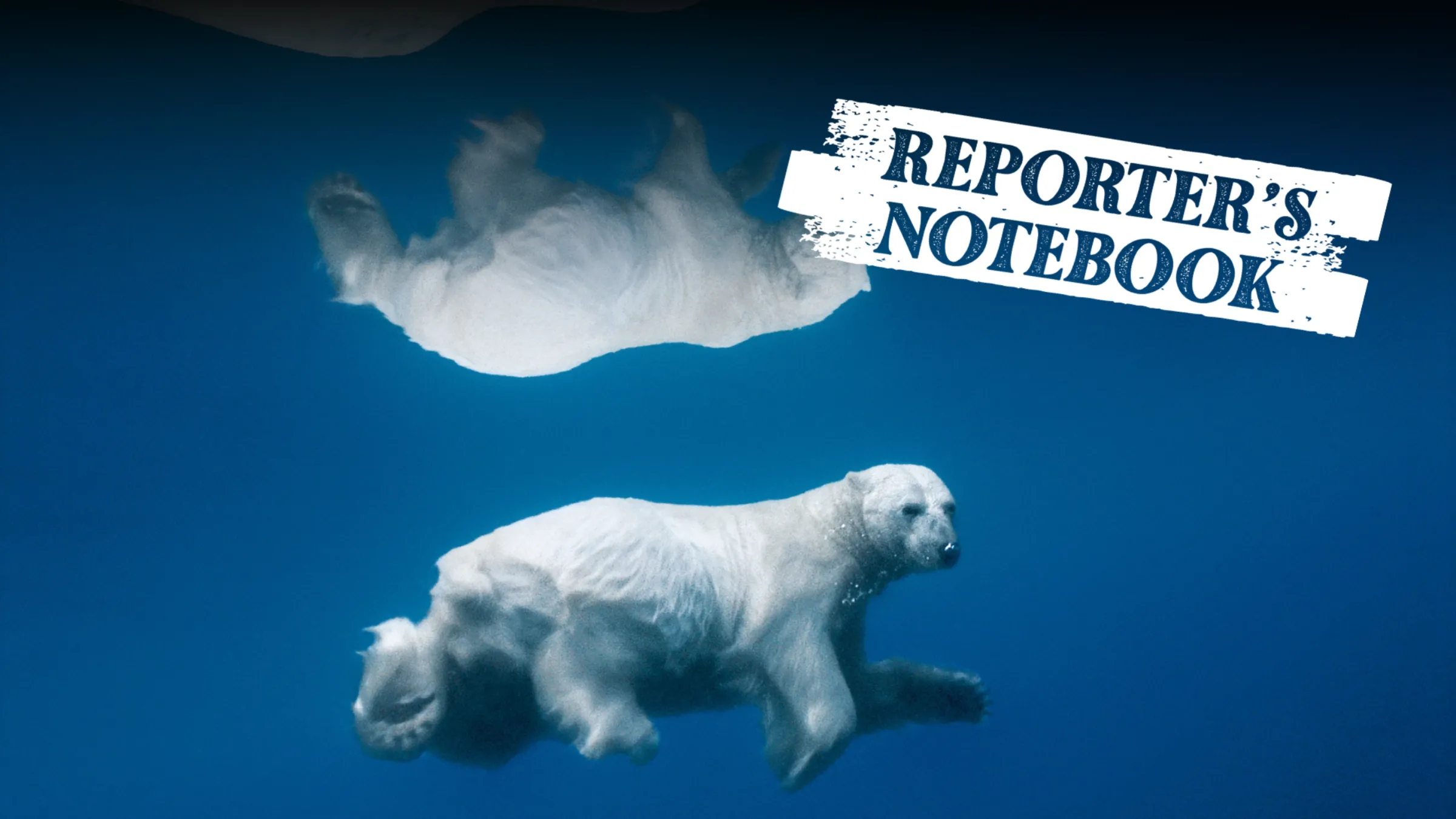You're on the front lines of the worst things happening to our planet.
Can wildlife photographers save nature?

A photgraph titled 'Polar Reflections' by Paul Nicklen, taken in Nunavut, Canada in 2006. Paul Nicklen/C. Parker Gallery/Handout via Thomson Reuters Foundation
What’s the context?
Leading photographers Paul Nicklen and Cristina Mittermeier are helping to protect natural ecosystems through art.
NEW YORK - A gallery on the south side of New York's Central Park is thousands of miles from where Paul Nicklen and Cristina Mittermeier made their names as two of the world's most famous wildlife photographers.
From polar bears to African elephants, the pair have brought images from some of the world's most remote places to millions of people, with more than 11 million followers on Instagram combined, including yours truly.
I met them during New York's annual climate week, keen to find out how their images from the frontlines of nature can move the needle on biodiversity protection.
The calm confines of the upmarket C. Parker Gallery were a welcome respite from the pace and noise of the city, but also a timely reminder of what's at stake beyond event spaces of an international conference.
"I thought that the only way to contribute was to either be a scientist, or to be a policymaker, or to be in a conservation group," said Mittermeier, who grew up in Cuernavaca near Mexico City.
While they are both marine biologists, and run a conservation group called SeaLegacy, it dawned on them that their key role is producing art to start conversations and highlight issues like protecting natural ecosystems.
"With our photography, we want to spotlight the incredible work that's happening all over the world and the fact that nature is still out there," she said.
Partners in work and life, their projects are funded by philanthropic foundations, corporate sponsors and selling art.
With a black-and-white photograph of a grizzly bear in Canada called Morris lurking over his shoulder, Nicklen told me they use "charismatic megafauna" like polar bears, leopard seals and sperm whales to tell nature's stories.
He first met a polar bear at the age of five, living in one of three non-Inuit families in a remote village on Baffin Island in Canada's Arctic north.
"The only thing you could do was go play outside," he said.
"You're out on the sea ice, you're running with dogs and huskies, and you become so connected to this environment. And then you're learning all the survival skills that are going to go on to help you do the work."
As the years have passed, however, he said it had often been demoralising to see the disconnect between people and climate change impacts like coral reef bleaching.
Nicklen began sounding the alarm about the climate impacts on Arctic sea ice in the early 2000s.
Later in 2017, his video of a starving polar bear in Canada's arctic went viral, depicting the impact of climate change on an iconic predator struggling for food.
"Like a war photographer, you're on the front lines of the worst things happening to our planet," Nicklen said.
'The cavalry has arrived'
As well as highlighting the value and vulnerability of nature, Mittermeier and Nicklen's work has contributed directly to campaigns to protect specific areas of land and ocean.
"Everything we do is at that intersection of art, science and conservation," Nicklen said.
In the Yukon Peel River valley, for example, he said Canada's Supreme Court judge held up a National Geographic article during a case by Indigenous and environmental groups to stop opening up the ecosystem to gold mining.
Similarly, in Norway's Lofoten archipelago, he said their work profiling orcas helped non-profits to keep oil companies from using seismic blasting that helps in oil and gas exploration.
Mittermeier remembers one case fondly in Canada, where they worked with a coalition of Indigenous groups against a proposed pipeline called the Enbridge Northern Gateway.
They were on the dock together with 10 geographers to tell the story, preparing equipment including underwater camera housings and drones, when she heard one of the Indigenous people behind her.
"He said: 'The cavalry has arrived, and this time they're on our side'," Mittermeier recounted.
"They were the resistance: they were the politically organised movement, and they just needed an outside voice to take their story to the big city," she said.
"And we did."
(Reporting by Jack Graham; Editing by Jon Hemming.)
Context is powered by the Thomson Reuters Foundation Newsroom.
Our Standards: Thomson Reuters Trust Principles




















